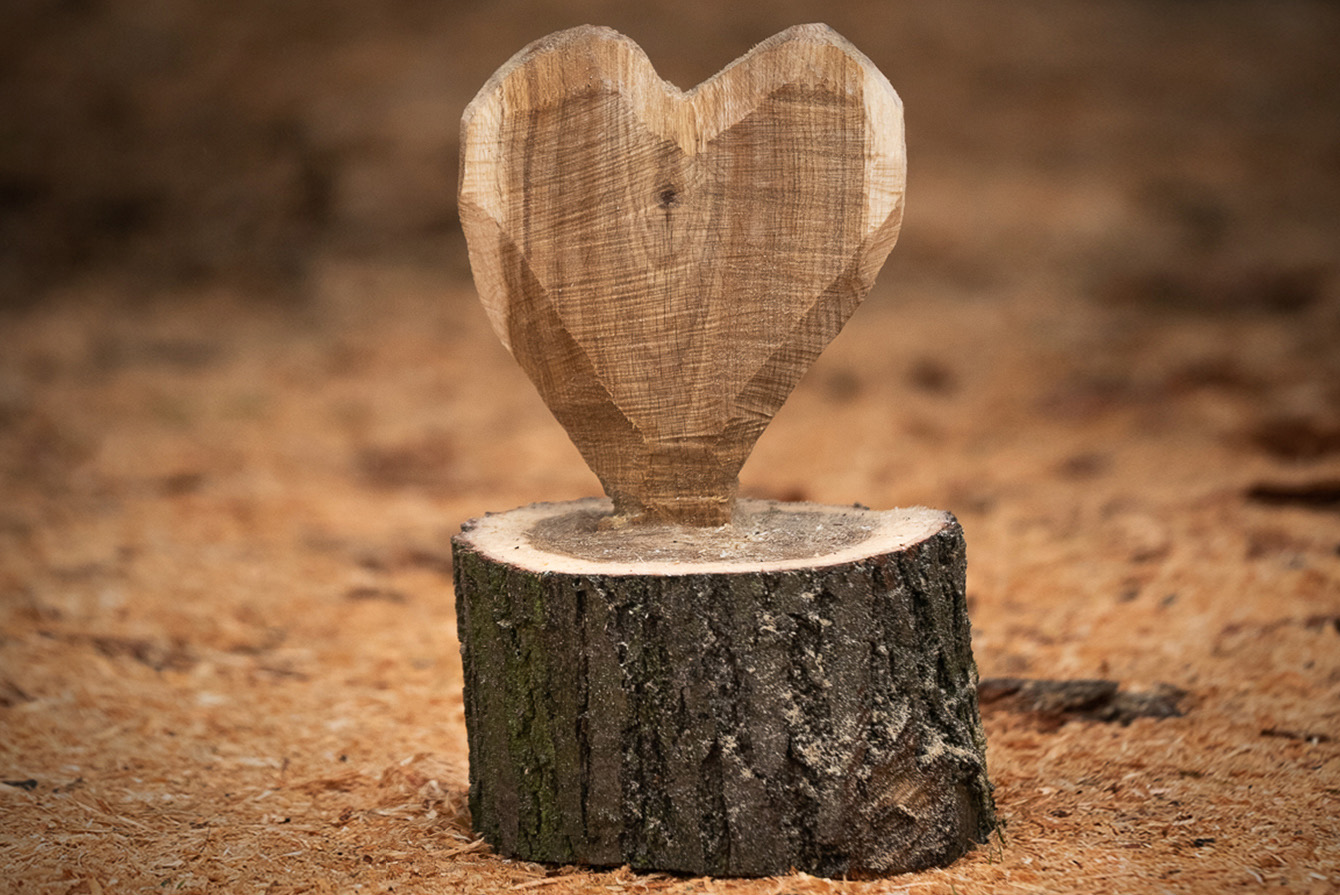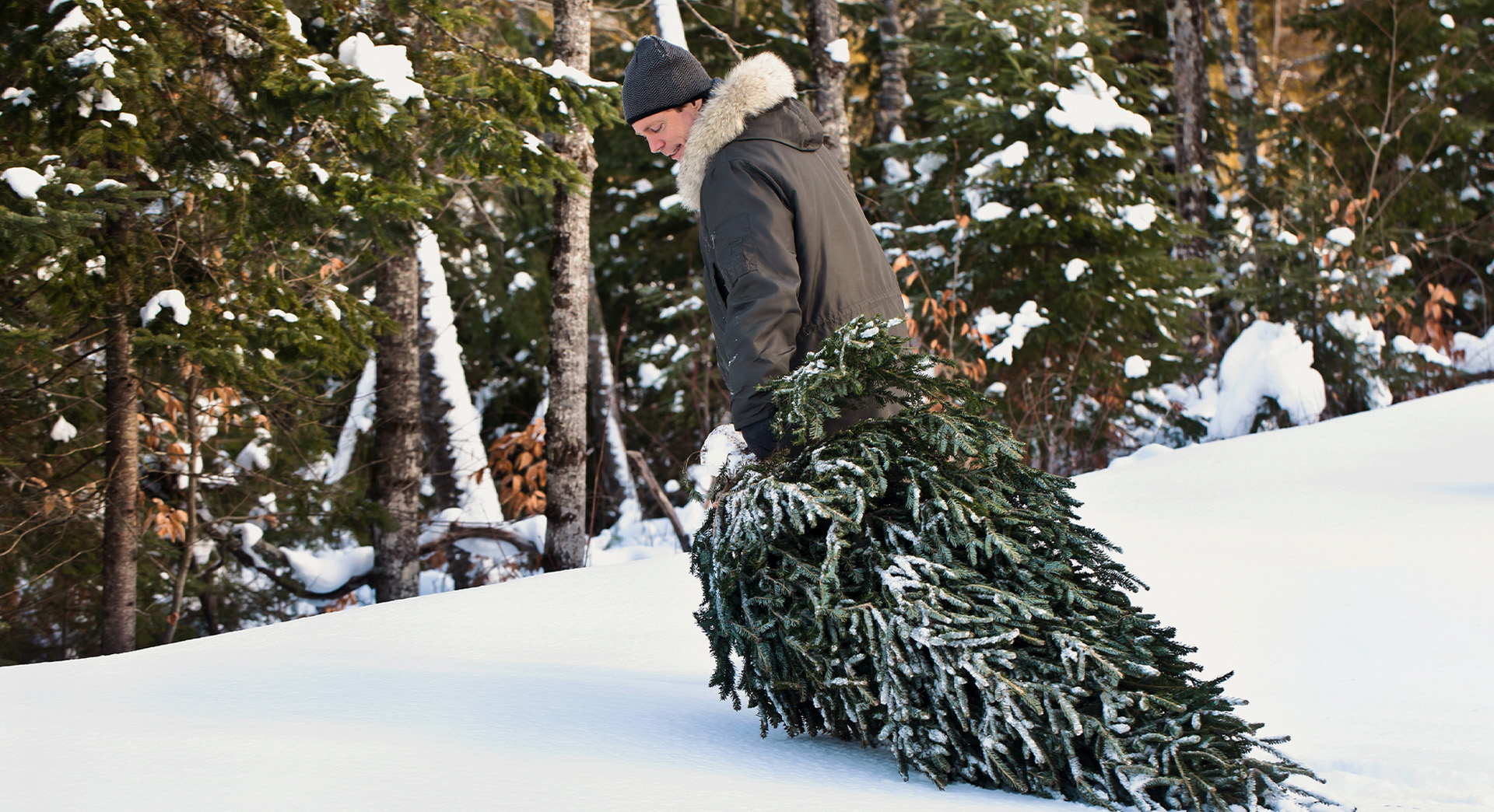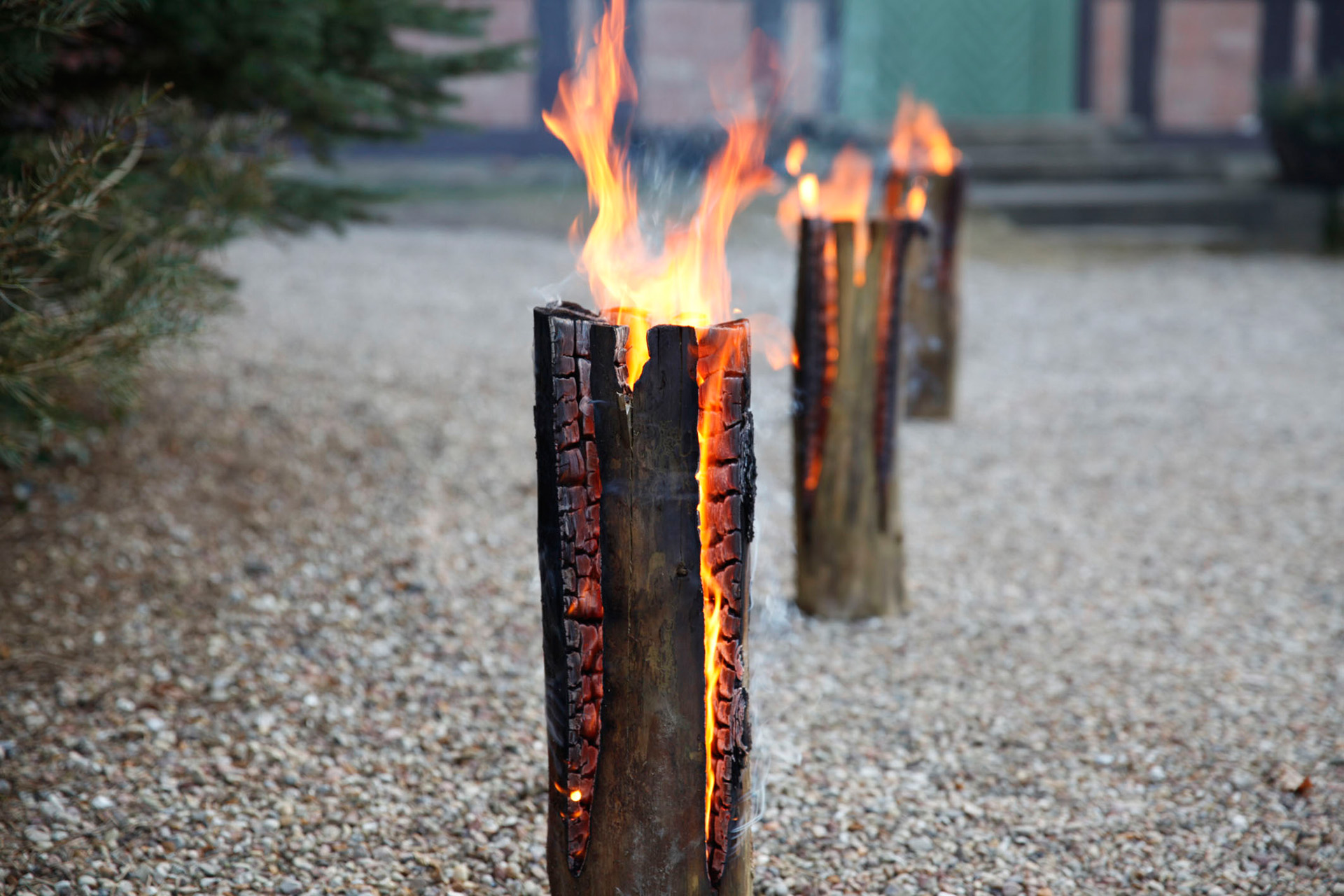How to build a DIY wooden sandpit
Our step-by-step instructions show you how easy it is build a DIY sandpit using wooden stakes and a chainsaw.
28.03.2025

A homeMADE sandpit – a treat for children and grown-ups alike
If you build a play paradise for children, you’re also creating some quiet time for the adults looking after them! A DIY wooden sandpit makes a handsome garden addition that offers fantastic entertainment for children of various ages. It means young imaginations have the chance to run wild as they build enormous castles or elaborate cakes.
As a DIY project, a sandpit is a great opportunity to make something the kids will love and that you can later look at with pride. We’ve put together what you need to consider before you tackle your DIY wooden sandpit, so with a little skill and our step-by-step instructions you’ll breeze through the task.
Build a DIY sandpit: choosing the right location
For this DIY project you need to think carefully about where to build your sandpit.

It needs to be somewhere that keeps the children nearby – a spot close to a patio or window would be ideal to ensure your child will always be in view and under adult supervision when playing.
It’s a good idea to choose a semi-shaded location for your DIY sandpit, though if you don’t have a site like that in your garden, a parasol can also provide the sun protection you need.
Should I build my sandpit from stone or wood?
There are no rules about what your DIY sandpit should be made from, which means there’s space for really creative ideas using what you have available – tractor tyres are popular, or you could even repurpose an actual boat.
But if you want to build a sandpit structure from natural materials, the choice is between stone and wood. Both offer advantages and disadvantages.
| Stones | Wood |
|---|---|
Advantages:
|
Advantages:
|
Disadvantages:
|
Disadvantages:
|
In our step-by-step instructions we explain how to build a DIY wooden sandpit.
Build a DIY sandpit: the right dimensions
A clear advantage of building your own sandpit is that you can determine the exact dimensions and shape as you like. Your main criteria is likely to be the amount of space in your garden, though you might also consider that the bigger your DIY sandpit, the more scope there is for your child to be creative. A bigger sandpit also means enough room for siblings and neighbours’ children to dig together – so the wooden sandpit you make could become a place for new friendships to be cemented.
In our example, we have used a size of 150 x 150 cm. Your DIY sandpit plans should assume a depth of at least 30 cm – that’s enough for children to really have fun digging away. Our DIY sandpit design also incorporates bench seats for comfortable play or a place for supervising adults to sit. Once your DIY project is built, you just need to fill it with play sand before it’s ready to delight your children again and again.
DIY sandpit in a log cabin style
Once you’ve made plans for the design, you can start to make your own DIY wooden sandpit. Our instructions are for a free-standing rustic design inspired by a log cabin, which makes a straightforward DIY project that looks great in any garden.
Build a DIY sandpit: what you’ll need
These are the tools and materials you need for your DIY sandpit:

Materials list
- 13 round wooden posts or stakes with a diameter of 10 cm
- 2 planed-edge boards, at least 20 cm wide
- Wood screws
- Play sand
- Sandpit geotextile
Tool list
- Chainsaw
- Staple gun
- Cordless screwdriver
- Metre rule
- Sawhorse
- Screw clamps
Build a DIY sandpit: how to do it
If your stakes are longer than you need, cut them to length. We used 150 cm lengths for our DIY sandpit. Measure, mark and saw off the excess wood, cutting straight across. Next you can round off the edges with the chainsaw, to prevent people getting caught on the corners of your DIY sandpit.

This DIY sandpit is going to be built in the style of a log cabin, which means notches need to be sawn out so that the stakes can be stacked snugly on top of one another to form a wall. Start by marking approximately 10 cm from the end; at that spot, measure and mark across half the width of the wood – our wood is 10 cm in diameter, so the mark is at 5 cm. It’s very important that the notches are at the same height on both ends of the stake, so take a wooden batten and use it to draw a straight line from one end of the wooden stake to the other.
The next DIY step is to make a paper template to help you create uniform notches. This template sets out the shape you need to cut out to allow for a second stake to be placed into the notch, at right angles to the first, forming the corner of your sandpit. Fold the template in the middle and align the folded edge with the halfway line you have already marked on the stake to ensure that the notches are at the same height on both ends.
The notches are key to the structure and stability of your DIY sandpit, so be careful when using your chainsaw to cut out the marked shape. Saw vertically into the marked-out area several times, then knock the pieces of wood out with a hammer. Carefully smooth the notch with your chainsaw; repeat these steps for both ends of 11 more stakes (keep 1 intact).
STIHL pro tip: Make the cut-out shape as round as possible so that the posts can fit together snugly and create a stable structure. For the best result, we recommend that you regularly check the fit by placing one of the round timbers into the recess as you cut it.

For your DIY sandpit to stand level on the ground, the bottom stake needs to be split lengthwise. Use the stake that doesn’t have notches, and secure it against rolling away using screw clamps. Use a long batten to draw a straight line from one end of the stake to the other. Now use the chainsaw to cut the stake in half along the mark.

Now you can assemble your DIY sandpit. First place the two pieces of the halved stake in the preferred location to form opposing walls, and then position two round timbers notches downward onto these bottom stakes, to form the other two walls of your DIY sandpit; they should fit snugly over the base stakes. Secure in place using wood screws, and repeat the process until all the stakes are installed.

Now attach the wooden seat boards to the top two timbers, using wood screws to secure these in place.

Keep your sandpit contents separated from the ground using water-permeable non-woven geotextile weed membrane. This base layer protects against insects and roots that could otherwise permeate the sandpit from below, as well as helping to keep your sand clean.

Now your finished DIY sandpit can be filled with sand and is ready for use! Play sand is the soft and safe choice for children.

Keeping it clean in the sandpit: We all know that children love to put things in their mouths, and that even sand cakes are likely to be sampled. That’s why it’s really important to keep cleanliness and hygiene in mind in your DIY sandpit as much as any other play area.
Dirt, rain and leaves can get into the sand and spread bacteria; dogs and cats also enjoy sand hills – either for playing or “doing their business”. A bought or built sandpit cover means you can prevent the sand from getting dirty too quickly.
For hygiene reasons, we also recommend regularly replacing the play sand in the sandpit.
Summary: build a DIY wooden sandpit
- Identifying the right location for your sandpit is crucial. Choose a semi-shaded and dry area that is easily in your line of sight from the house. If it’s in a sunny spot, consider adding a cover to provide protection from the sun
- Pick up some specialist play sand
- The wider and deeper the design of your DIY sandpit, the more scope there is to have fun





